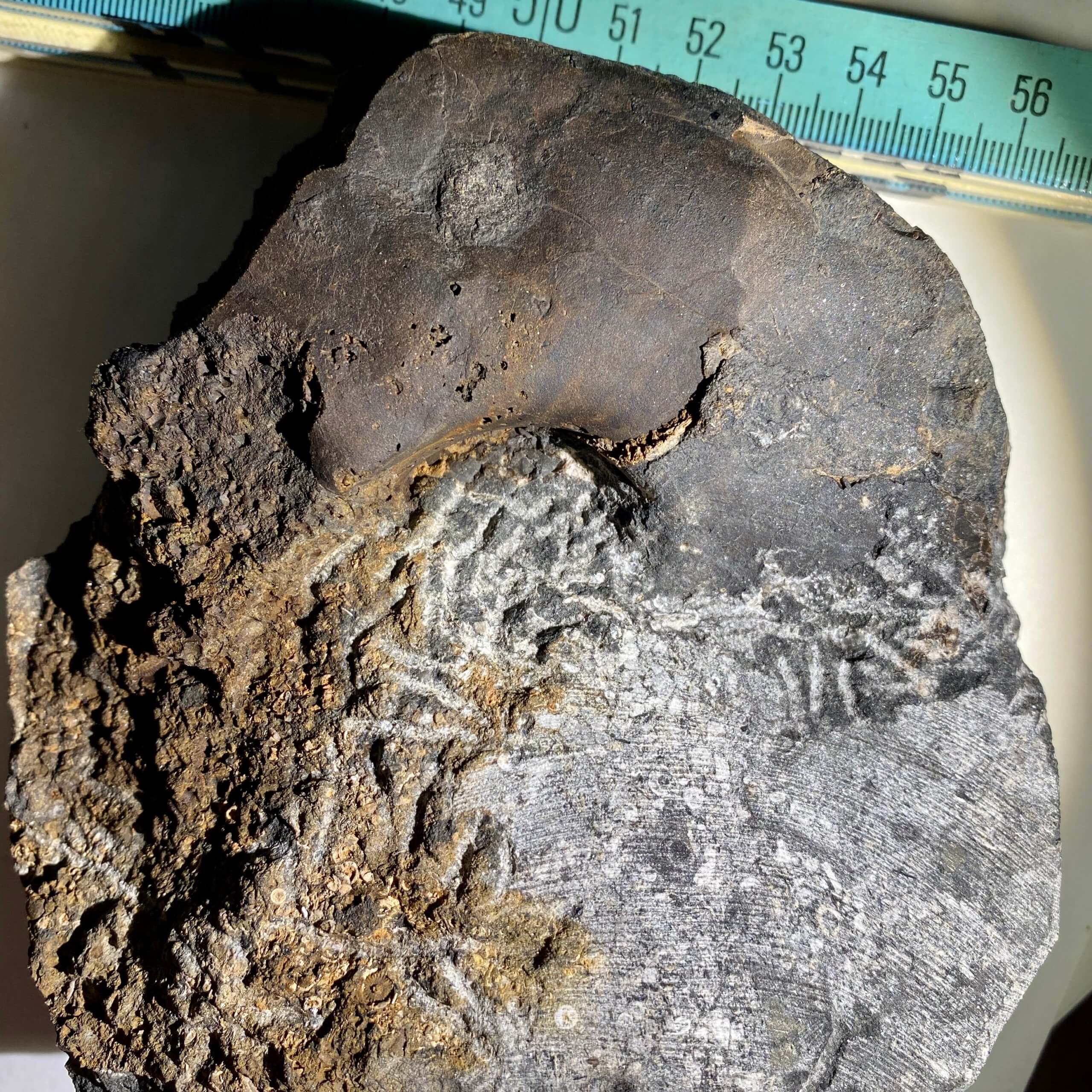Catalog Number: CG-0068
This large cephalopod was found in Brush Creek Limestone locally. The body chamber is large and is part of the demineralized layer that is a bit softer. I have spent a few bits of time working away from the limestone while trying to preserve the fossilized shell layer. The shell appears much more flay, and the body chamber is larger than any I have found of this shape.
I suspect this might not be Metacoceras, and I am also considering Domatoceras as an identification right now. The large wide-body chamber combined by the shape of the venter matches a specimen from Plate 5 from a University of Kansas article referenced below by A.K. Miller, J.H. Land, and A.G. Unklesbay from 1947.
The shell is dipping downwards into the limestone so more and more matrix needs removed with each pass. The body chamber appears crushed. The umbilical area did not have any visible definition and no impressed area is seen within. The venter appears flat and narrow. I am not sure if this is due to it being a broken shell or if this is a flat genus of cephalopod.
The whorl height is very impressive. The flank appears only slightly concave. Both the umbilical zone wall and ventrolateral shoulders are close to a ninety-degree angle.
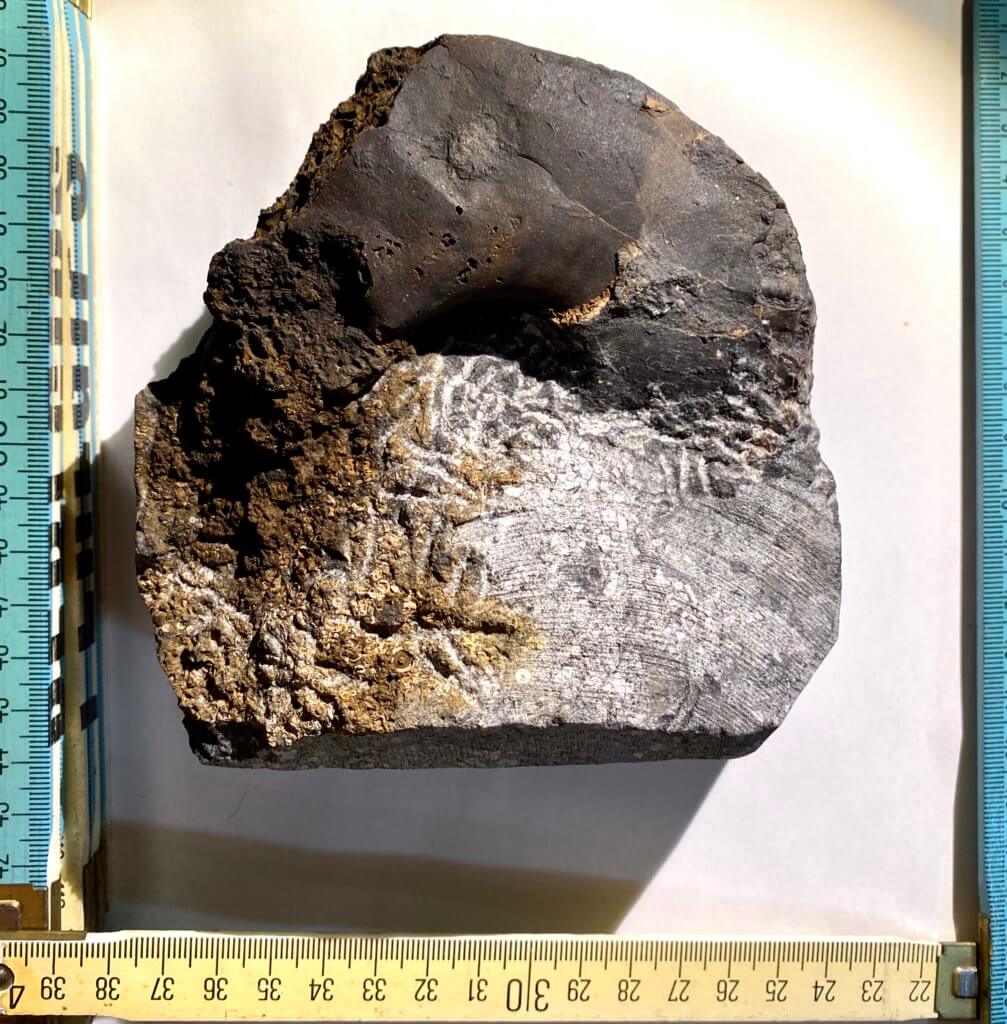
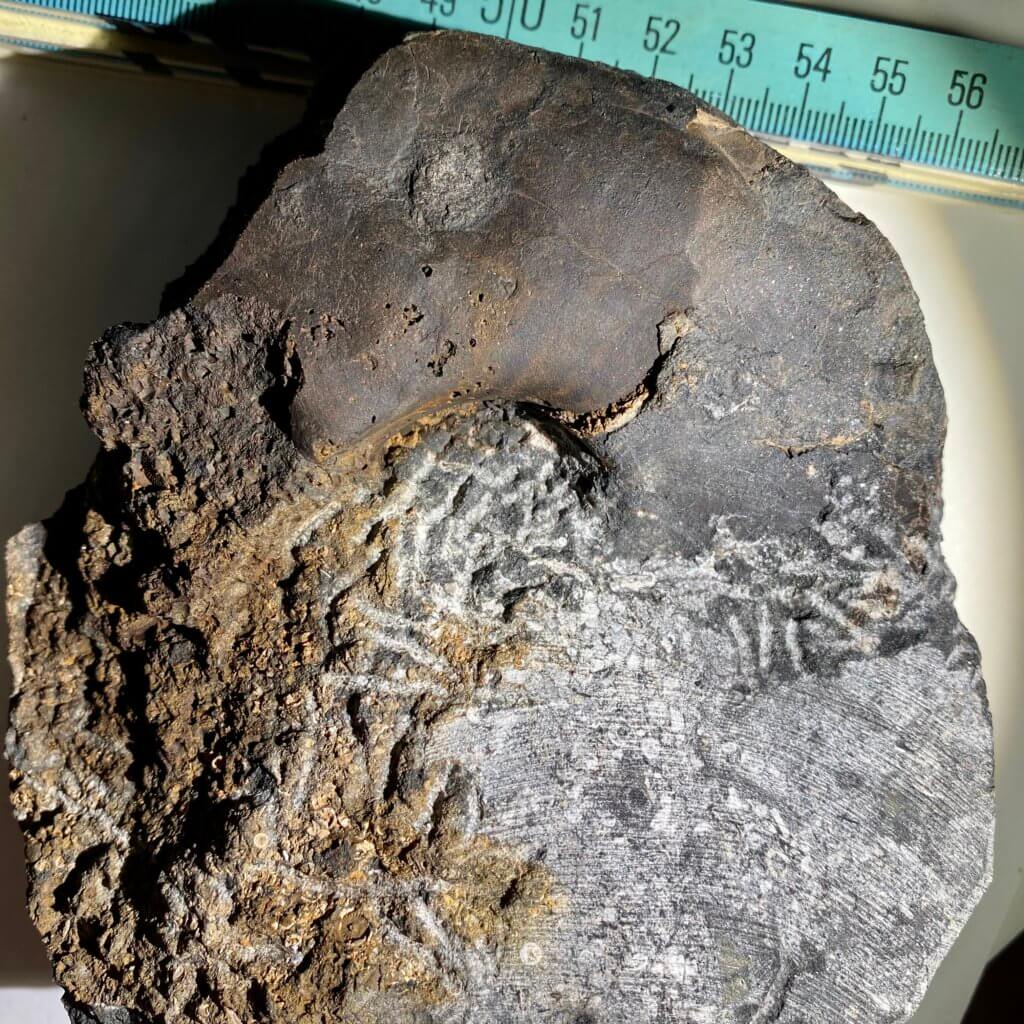
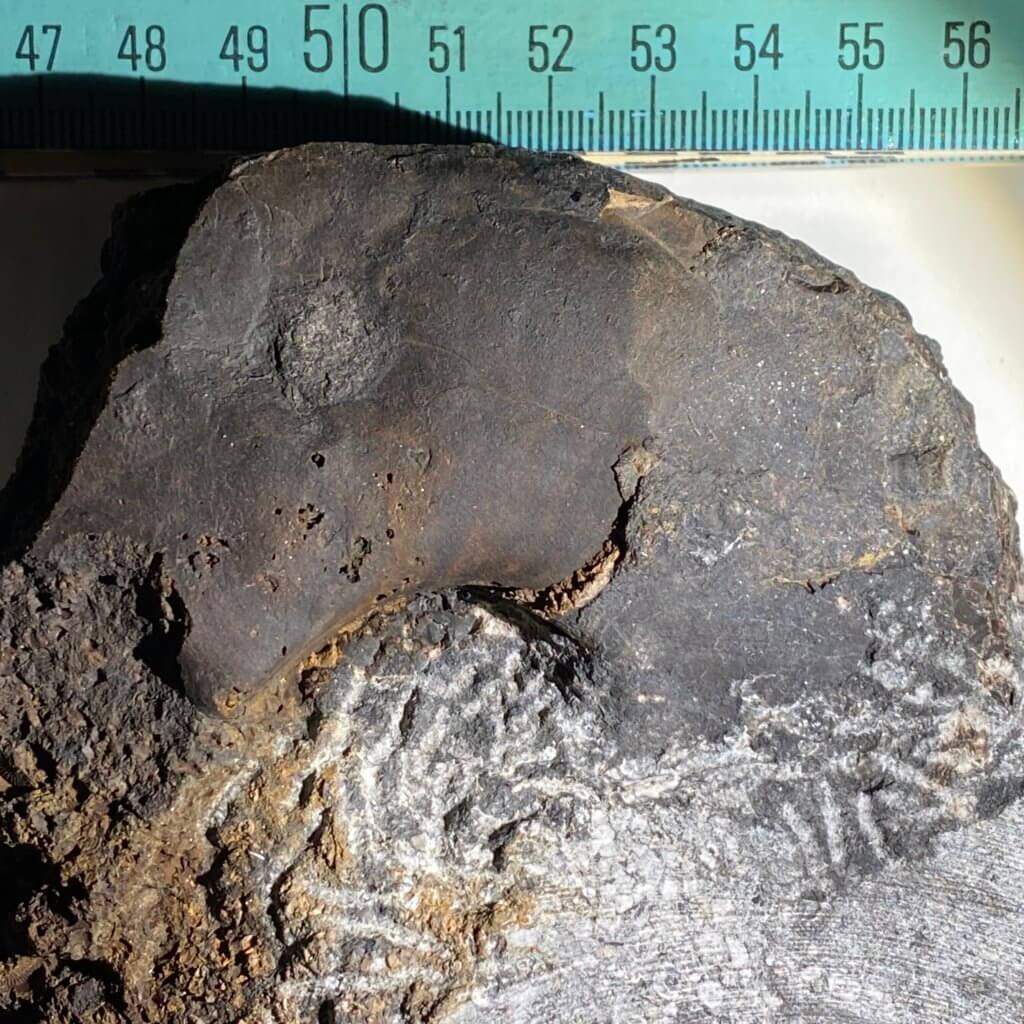

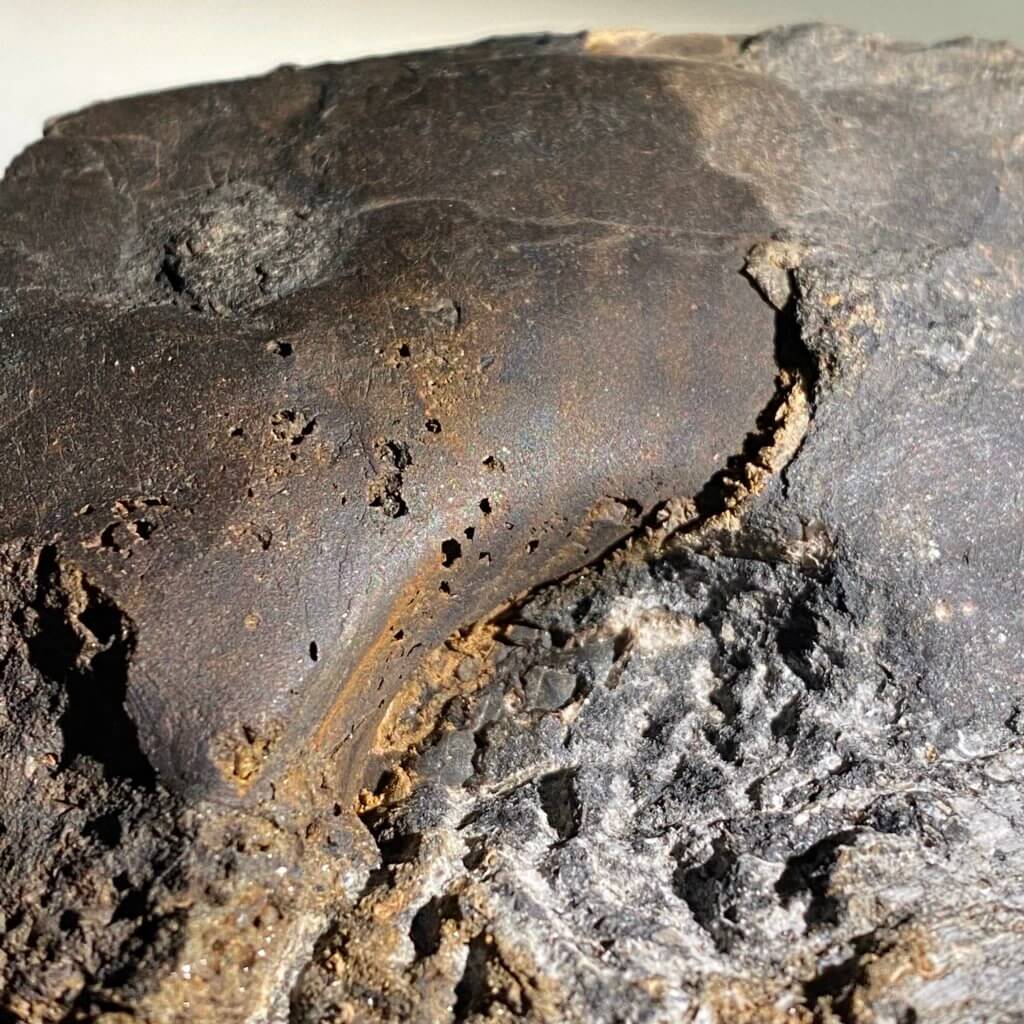

Comparison with Specimen CG-0071
The body chamber is much larger than the one on CG-0071. I consider CG-0071 to be a rather large specimen, but it is still possible it’s a younger example.
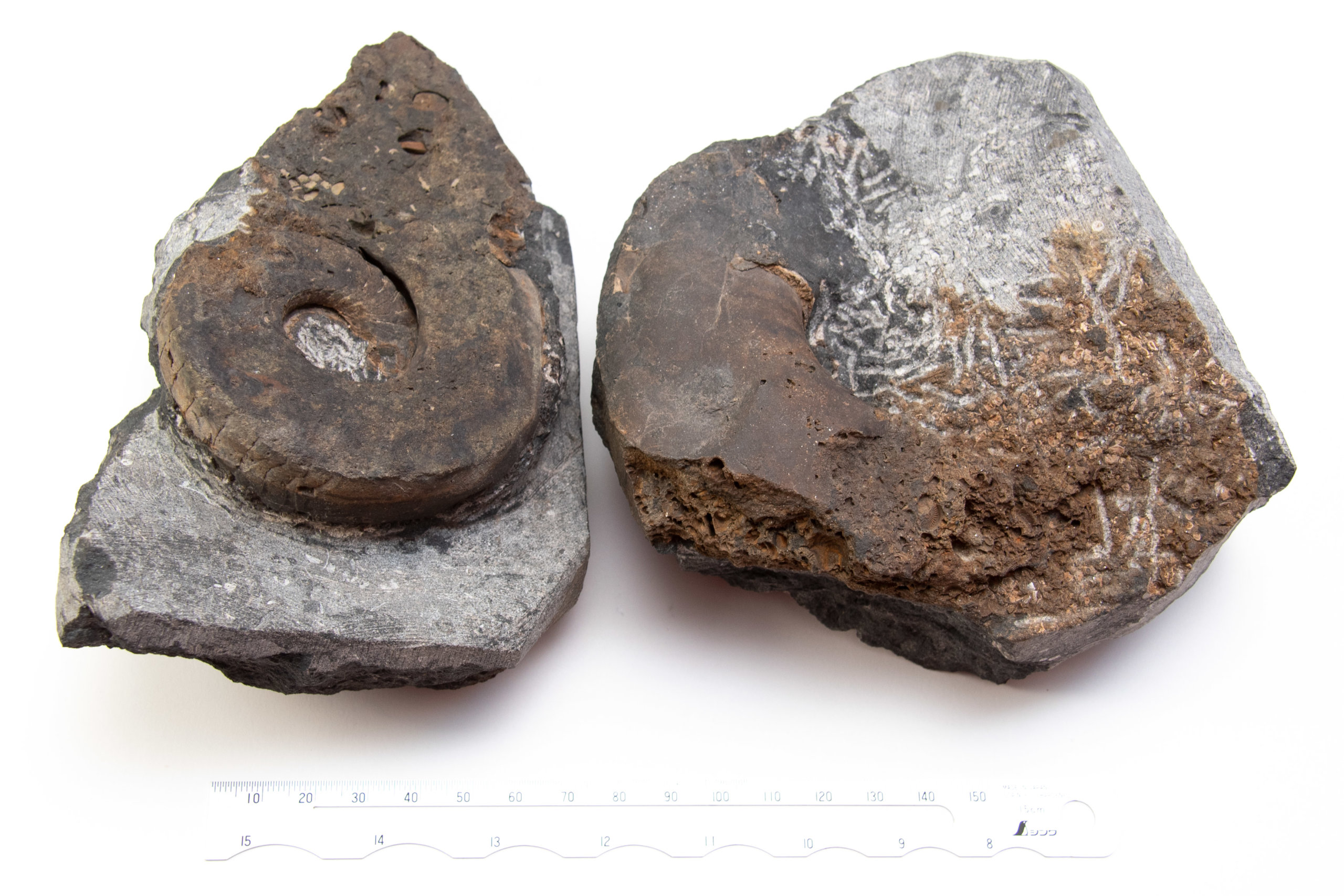
Venter Shape
The venter on a Domatoceras should be concave compared to a straight-to-convex shape of Metacoceras. I am not sure if this is representative of crushing or a natural concave shape.
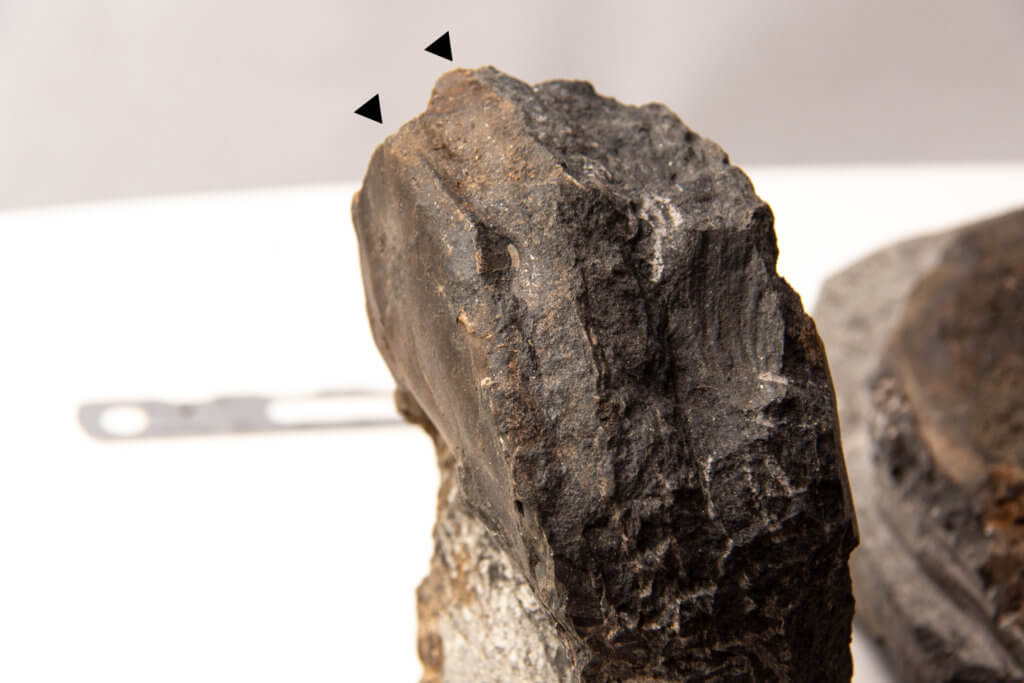
References
- Miller, A.K., Lane, J.H. Jr, Unklesbay, A.G., 1947, A nautiloid cephalopod fauna from the Pennsylvanian Winterset Limestone of Jackson Country, Missouri, The University of Kansas Paleontological Contributions: Article 3 Mollusca 2, Plate 5

